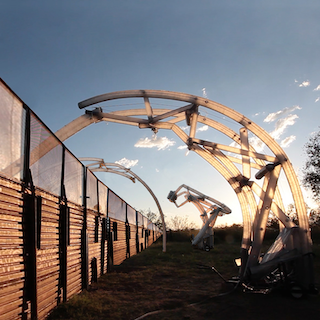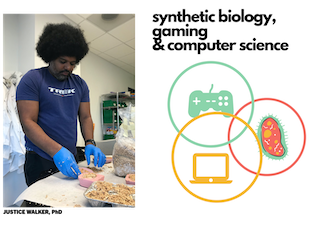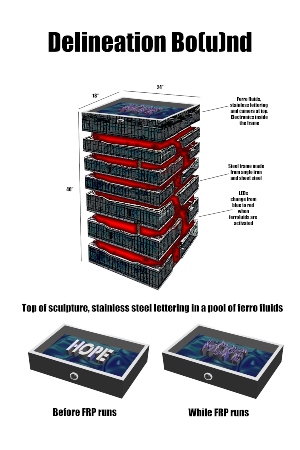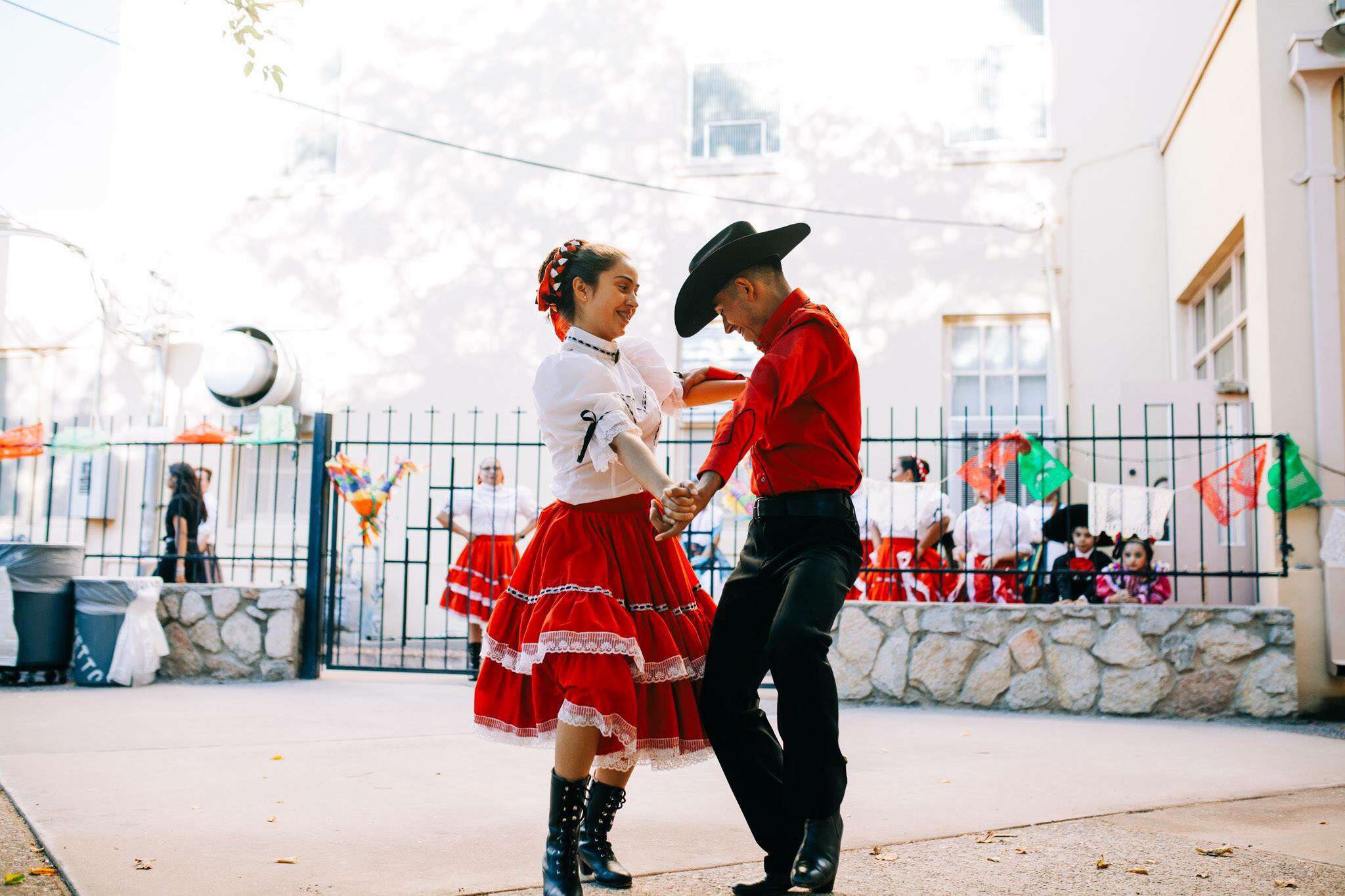
MinerAlert

MinerAlert
CoPI’s Kerry Doyle, Rubin Center for the Visual Arts and Chico MacMurtrie, Amorphic Robot Works/ ARW
 Border Crossers, is a large-scale performance and participatory procession involving several lightweight robotic sculptures and the trans-border communities in El Paso, Texas and Juarez, Mexico. Border Crossers will perform a peaceful, symbolic, “crossing” of the U.S.- Mexico border using the combined power of art, technology and community to create a radically positive and inclusive view of border culture. The project will culminate in a series of coordinated public ‘activations’ at multiple sites in the El Paso, Texas/Juarez, Mexico area in collaboration with the Rubin Center for the Visual Arts at The University of Texas at El Paso. Each event involves the procession and activation of two or more pneumatic “soft-machines,” at both sides of the border. When the Border Crossers reach their maximum height of 30-35 feet, a coiled fabric tendril gradually unfurls into an arch-like shoot that “grows” over the border and touches down on the other side, forming multiple arches that straddle the border. The slow, organic movements and physical softness of these inflatable border crossing machines would contrast with the rigid metal fence, forming a powerful metaphor for the living relationship between the diverse communities along the border.
Border Crossers, is a large-scale performance and participatory procession involving several lightweight robotic sculptures and the trans-border communities in El Paso, Texas and Juarez, Mexico. Border Crossers will perform a peaceful, symbolic, “crossing” of the U.S.- Mexico border using the combined power of art, technology and community to create a radically positive and inclusive view of border culture. The project will culminate in a series of coordinated public ‘activations’ at multiple sites in the El Paso, Texas/Juarez, Mexico area in collaboration with the Rubin Center for the Visual Arts at The University of Texas at El Paso. Each event involves the procession and activation of two or more pneumatic “soft-machines,” at both sides of the border. When the Border Crossers reach their maximum height of 30-35 feet, a coiled fabric tendril gradually unfurls into an arch-like shoot that “grows” over the border and touches down on the other side, forming multiple arches that straddle the border. The slow, organic movements and physical softness of these inflatable border crossing machines would contrast with the rigid metal fence, forming a powerful metaphor for the living relationship between the diverse communities along the border.
Funding: Warhol Foundation for the Visual Arts; Texas Commission on the Arts; Creative Capital MAP Fund
PI: Justice Toshiba Walker, Ph.D.; UTEP College of Education
There have been significant national efforts to modernize K-12 life science education in the United Stated as reflected in such initiatives as the Next Generation Science Standards (NGSS) and its paradigmatically distinct emphasis on engineering design and computation. One example of an area where this has been taken up for K-12 learning is in the burgeoning synthetic biology field where cells are genetically modified, like programmable units, to produce a useful behavior or output. The recent development of low-cost portable wet lab devices and curriculum have made learning in these areas increasingly feasible for K-12 education.
 As a result, there is a growing need to develop teaching frameworks that is consistent with national education goals of raising public literacy and supporting workforce development in these areas. The problem is that local social and cultural differences make it difficult to deploy synthetic biology learning at scale, without reifying marginalizations that result among groups that do not recognize the field and its growing ubiquity in relation to their everyday lives. Culturally relevant pedagogies have emerged as a plausible approach to synthetic biology professional development for K-12 educators. This pilot project seeks to investigate how educators respond to a culturally relevant framing of an existing and nationally established synthetic biology professional development program. Using observation notes, focus group interviews, and pre/post surveys, this pilot study will address the following research questions: [1] what critical framings support culturally relevant synthetic biology teaching and learning, [2] how do educators and students respond to a culturally relevant framing for synthetic biology professional development, and [3] how do educators' and students' understandings and perspectives of synthetic biology shift after encountering a culturally relevant framing for synthetic biology teaching and learning? Insights gleaned represent first steps toward leveraging synthetic biology to support more personalized life science learning.
As a result, there is a growing need to develop teaching frameworks that is consistent with national education goals of raising public literacy and supporting workforce development in these areas. The problem is that local social and cultural differences make it difficult to deploy synthetic biology learning at scale, without reifying marginalizations that result among groups that do not recognize the field and its growing ubiquity in relation to their everyday lives. Culturally relevant pedagogies have emerged as a plausible approach to synthetic biology professional development for K-12 educators. This pilot project seeks to investigate how educators respond to a culturally relevant framing of an existing and nationally established synthetic biology professional development program. Using observation notes, focus group interviews, and pre/post surveys, this pilot study will address the following research questions: [1] what critical framings support culturally relevant synthetic biology teaching and learning, [2] how do educators and students respond to a culturally relevant framing for synthetic biology professional development, and [3] how do educators' and students' understandings and perspectives of synthetic biology shift after encountering a culturally relevant framing for synthetic biology teaching and learning? Insights gleaned represent first steps toward leveraging synthetic biology to support more personalized life science learning.
PI: Angel Cabrales (UTEP College of Liberal Arts) and Nathaniel Robinson (UTEP, Office of Research and Sponsored Projects Assistant Vice President), Martine Ceberio, PhD (UTEP, Computer Science)

The interactive art installation is an artistic application of emerging technologies that explores the fluidity, rigidity, and separation of people. Particularly as it relates to polarizing and imprecise definitions of immigration, race, and class. These interactions are intended to stimulate dialogues on what separates us as people, where those boundaries are fluid, and how technology can and should play a role. The discussions will benefit from the realization that structural, political, and technological biases and borders in society are artificially mirrored and paralleled by the automated perceptions and decisions we make as individuals about other individuals. Exploring the bounds and bonds of social challenges through the merger of art and technology. Delineation Bo(u)nded covers various interactive sculptures that act in representing, portraying, and discussing opportunity in its many social meanings. Facial recognition, automation, machine learning and other leading tech are also explored in terms of their application in the arts and in their place in society relative to immigration, security, and forms of mobility.
Juan Ferret, PhD. (UTEP, College of Liberal Arts), Kim Diaz, PhD (UTEP, College of Liberal Arts), Nate Robinson, PE (UTEP, Office of Research and Sponsored Projects Assistant Vice President)
Shadows to Light (S2L) is a program specially designed from the ground-up for participants in the Sendero program, a Federal Re-entry program for returning citizens from prison, and the Adelante program, a Federal Diversion program that dismisses felony charges upon graduation. S2L is an 18-month humanities class for participants to develop critical inquiry, deeply engaging literacy skills, effective problem solving techniques, and centering methods that converge into a successful space for transformative higher learning.
Sponsors: The Mellon Foundation, US DOJ
Angel Cabrales (UTEP College of Liberal Arts) and Nathaniel Robinson (UTEP, Office of Research and Sponsored Projects Assistant Vice President)
Multimedia sculptor Angel Cabrales talks about the wooden golf ball launchers that are a part of his art installation, "A-Hole in One: The Battlegrounds," at Galería Lincoln in Central El Paso. Cabrales said the installation is inspired by the 2020 election season. People wanting to participate in the installation for free can show their "I Voted" sticker.
PI: Sarah Jean Johnson (UTEP College of Education)
Co-PI: Maria de la Piedra (UTEP College of Education) and Nathaniel Robinson (UTEP, Office of Research and Sponsored Projects Assistant Vice President)
Sponsor: National Endowment of the Arts

Our research examines community arts programs at the United States and Mexico border with an interest in how these programs align with the cultural learning practices of the majority Mexican-American population of the region. These dimensions (the pedagogy and its surrounding cultural meanings) are rarely brought together in studies of arts education despite a consensus among learning scientists that cultural practices are a central element in the dynamics influencing human learning.
We situate our research in five community arts programs with different disciplinary foci and apply video microanalysis techniques combined with observations, interviews, and other qualitative methods. We are interested, for one, in the practices and actions by which teaching is accomplished. Secondly, we explore the families’, students’, and educators’ meanings, desires, and attributions that account for the existence of the programs. And, lastly, we seek to understand the relationship between these two domains, that is, the pedagogy and its surrounding cultural meaning. Our research contributes to improvement in research-based methods in arts pedagogy for diverse populations and to theorizing on learning in the arts.